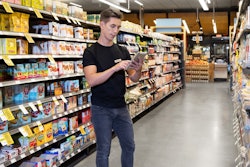
The holiday season is a time of joy, celebration and indulgence. Families gather around for festivities filled with sweet treats, and retailers stock their shelves with sugary delights to meet the increased demand. However, this year, there's a bitter twist to the holiday tale – weather factors and an impending sugar shortage may leave both producers and consumers in a sticky, pun intended, situation.
The sugar shortage is primarily driven by a convergence of factors that have disrupted the global sugar market. According to Pawan Joshi, EVP of products & strategy for e2open, reports cite that the rising threat of El Nino’s weather could reduce sugarcane yield by 10-15% globally, leading to higher prices for the lower supply. Sugar shortages could become a valid concern given that the U.S. agriculture policy requires at least 85% of U.S. sugar purchases to come from domestic processors, so when demand rises, prices spike and supply tightens.
"Like other shortages, if sugarcane yield continues to be constrained, we can expect to see a rise in price since it’ll be more difficult for companies to source, tipping the balance of supply and demand," says Joshi. "Food and beverage manufacturers may need to reduce their production or make other changes to accommodate a sugar supply constraint. This could include products such as soda, baked goods and candy."
And sugar is not confined to the sweetener itself; it has far-reaching implications for various supply chains, particularly during the holiday season.
- Confectionery and Bakery Industry: Manufacturers of candies, chocolates, cookies and cakes rely heavily on sugar as a primary ingredient. A soar in cost of sugar would have these companies faced with the tough choice of either absorbing the increased costs or passing them on to consumers through higher prices.
- Beverage Producers: Many sodas and juices require significant amounts of sugar to maintain their taste and consistency. As sugar prices rise, these companies may resort to using alternative sweeteners, which could alter the taste of their products and potentially deter consumers.
- Food Processors: Beyond sweets and drinks, sugar is a common ingredient in a wide range of processed foods, including sauces, condiments and canned goods. Food processors may rethink their recipes and explore alternative ingredients or reduce the sugar content in their products, which can be challenging for maintaining flavor profiles.
- Restaurants and Bakeries: Restaurants and bakeries that rely on sugar for their recipes will be feeling the pinch. Some establishments may be forced to adjust their menus or limit the availability of certain dishes, affecting the dining experience for their customers.

Preparation comes in the tried-and-true form of technology and solid relationships. Joshi explains, "The best-prepared companies have well-connected supply chain ecosystem and technology that provides a 360-degree view of the supply chain – from forecasting demand to better plan production and inventory, to monitoring disruptions and optimizing the transportation of goods." Where "sugarflation" might skyrocket, Joshi says, companies might combat the instance by optimizing their supply chains to minimize any waste and save costs along the way.
Supply shortages put a damper on consumers and manufacturers alike at the height of the pandemic. At the time, substitutes were made to fill the gaps and systems were tweaked to bring about success in a strained time for supply chain. Similar acts maybe on the horizon, as the holiday season quickly approaches. The trends for sugar serve as a stark reminder of the interconnectedness of supply chains and the vulnerability of our food systems to the external factors lurking just around the corner.



















